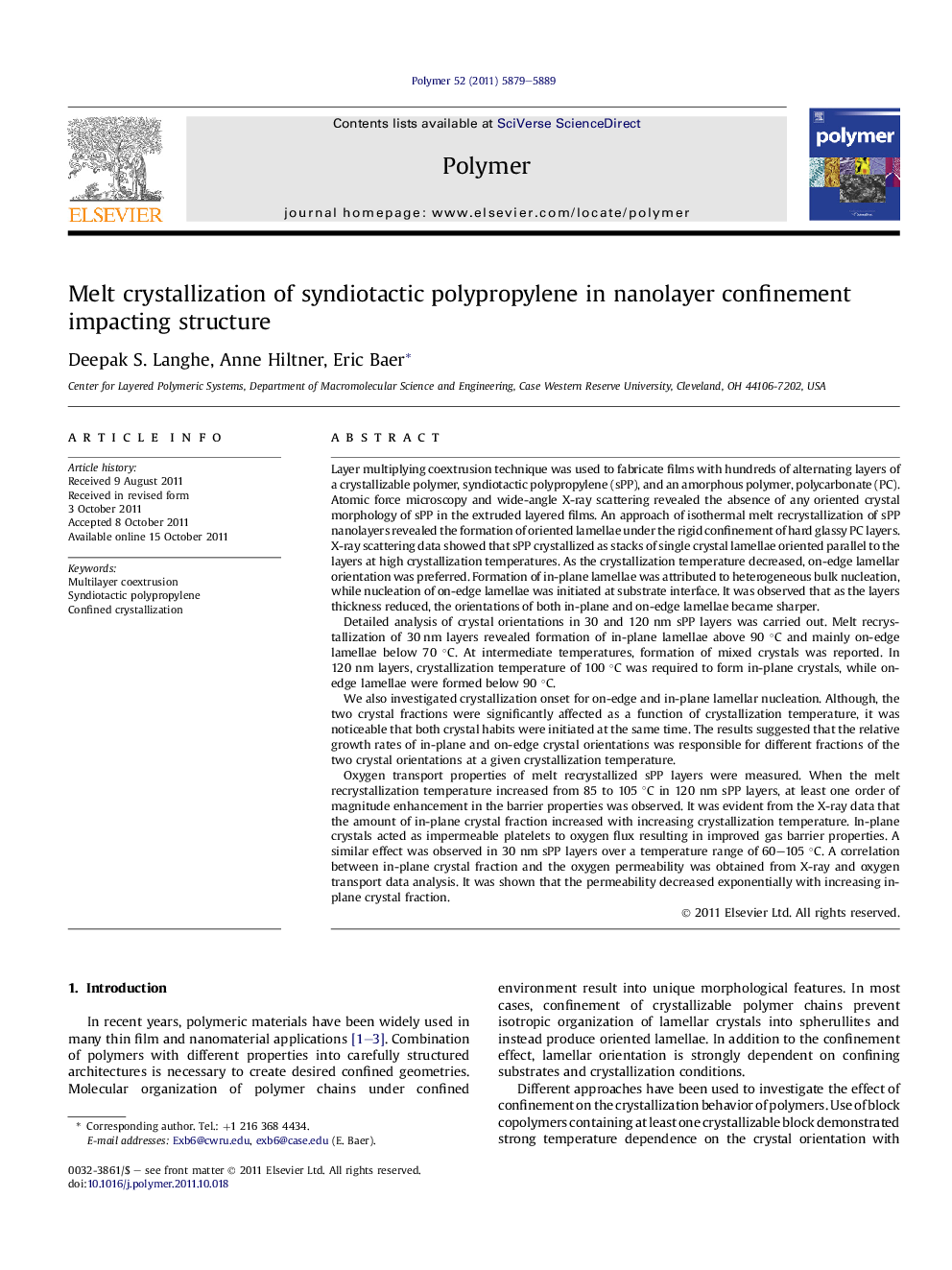| کد مقاله | کد نشریه | سال انتشار | مقاله انگلیسی | نسخه تمام متن |
|---|---|---|---|---|
| 5184151 | 1381040 | 2011 | 11 صفحه PDF | دانلود رایگان |

Layer multiplying coextrusion technique was used to fabricate films with hundreds of alternating layers of a crystallizable polymer, syndiotactic polypropylene (sPP), and an amorphous polymer, polycarbonate (PC). Atomic force microscopy and wide-angle X-ray scattering revealed the absence of any oriented crystal morphology of sPP in the extruded layered films. An approach of isothermal melt recrystallization of sPP nanolayers revealed the formation of oriented lamellae under the rigid confinement of hard glassy PC layers. X-ray scattering data showed that sPP crystallized as stacks of single crystal lamellae oriented parallel to the layers at high crystallization temperatures. As the crystallization temperature decreased, on-edge lamellar orientation was preferred. Formation of in-plane lamellae was attributed to heterogeneous bulk nucleation, while nucleation of on-edge lamellae was initiated at substrate interface. It was observed that as the layers thickness reduced, the orientations of both in-plane and on-edge lamellae became sharper.Detailed analysis of crystal orientations in 30 and 120 nm sPP layers was carried out. Melt recrystallization of 30 nm layers revealed formation of in-plane lamellae above 90 °C and mainly on-edge lamellae below 70 °C. At intermediate temperatures, formation of mixed crystals was reported. In 120 nm layers, crystallization temperature of 100 °C was required to form in-plane crystals, while on-edge lamellae were formed below 90 °C.We also investigated crystallization onset for on-edge and in-plane lamellar nucleation. Although, the two crystal fractions were significantly affected as a function of crystallization temperature, it was noticeable that both crystal habits were initiated at the same time. The results suggested that the relative growth rates of in-plane and on-edge crystal orientations was responsible for different fractions of the two crystal orientations at a given crystallization temperature.Oxygen transport properties of melt recrystallized sPP layers were measured. When the melt recrystallization temperature increased from 85 to 105 °C in 120 nm sPP layers, at least one order of magnitude enhancement in the barrier properties was observed. It was evident from the X-ray data that the amount of in-plane crystal fraction increased with increasing crystallization temperature. In-plane crystals acted as impermeable platelets to oxygen flux resulting in improved gas barrier properties. A similar effect was observed in 30 nm sPP layers over a temperature range of 60-105 °C. A correlation between in-plane crystal fraction and the oxygen permeability was obtained from X-ray and oxygen transport data analysis. It was shown that the permeability decreased exponentially with increasing in-plane crystal fraction.
Journal: Polymer - Volume 52, Issue 25, 28 November 2011, Pages 5879-5889